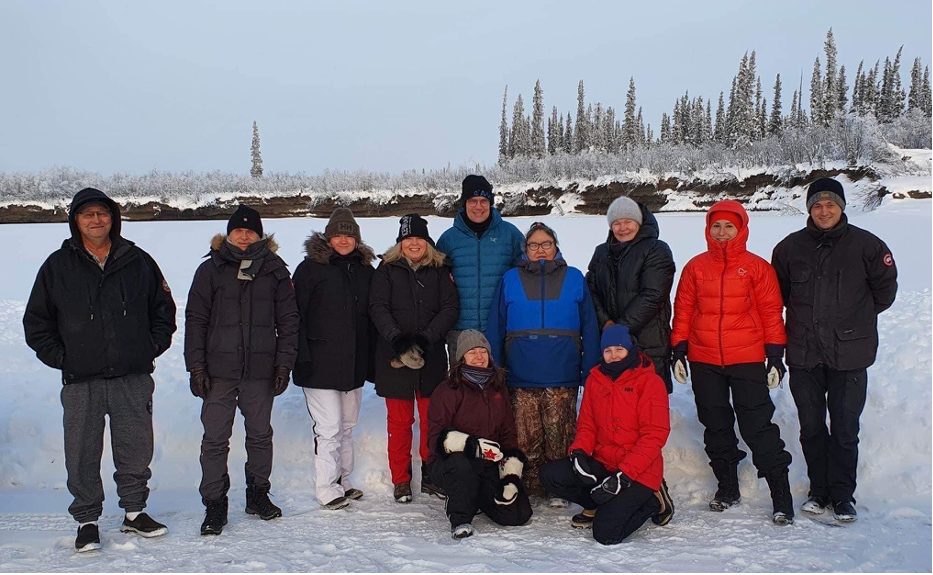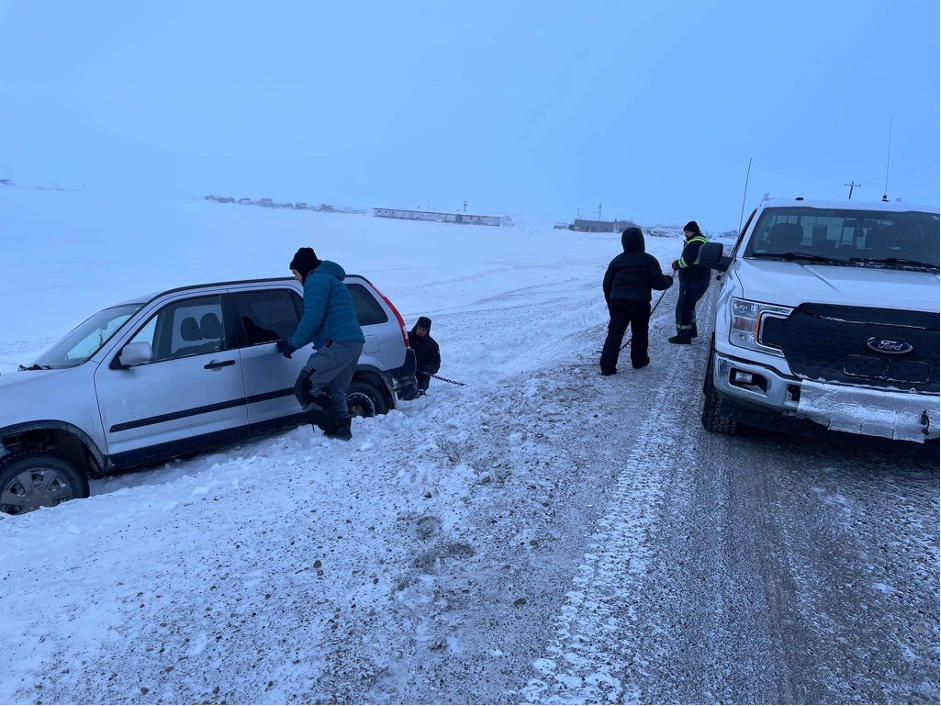The “Permafrost Days 2023” The “Permafrost Days 2023” (UArctic transdisciplinary workshops) were a series of events organized by Nunataryuk researcher Susanna Gartler, who spent the winter season of 2022/23 in the Inuvialuit Settlement Region and Gwich’in Settlement Area. The “Permafrost Days” took place between the 7th to 9th of February in Inuvik and Aklavik. They brought together visiting scientists with local stakeholders, strengthened networks and provided opportunities to discuss the relevance and applicability of scientific results with the communities of Inuvik, Aklavik and Tuktoyaktuk.

The initiative was very well received and included three full days of discussions, workshops and scientific presentations. In addition to the invited scientists, representatives of the Aklavik and Tuktoyaktuk Hunters and Trappers Committees (AHTC & THTC), as well as one of the co-organizers of the Canadian Permafrost Association 2022 conference were officially invited and attended the events. CBC, the Canadian Broadcasting Corporation, was present during all three days, the outcome of which you can find here: "Sinking In".

The “Permafrost Days” were attended by representatives of a large number of local organizations and governments, and created an excellent opportunity for effective co-creation of knowledge, science communication & outreach. The events reinforced existing and created many new connections and provided ample opportunities for both formal and informal exchange between the different stakeholders.

The Tuesday workshop, which took place in the Permafrost Room of the Mackenzie Hotel in Inuvik on the 7th of February, was attended by a total of more than twenty professionals. The attendees were affiliated with a large variety of local and regional organizations. These included the Aklavik Hunters and Trappers Committee (AHTC), the Tuktoyaktuk Hunters and Trappers Committee (THTC), the Gwich’in Tribal Council (Department of Lands and Resources), the Gwich’in Development Corporation, the Aurora Research Institute, the NWT Department of Infrastructure and the Department of Natural Resources, the Hamlet of Inuvik, the Inuvik Greenhouse, the NWT Geological Survey, the Inuvialuit Regional Corporation and Parks Canada. In this group we discussed in depth key hazards, socio-economic and health-related consequences, indicators of permafrost thaw impacts as well as adaptation measures. The UArctic group (visiting researchers) consisted of eleven people, of which five were early career scientists, while another four local ECRs affiliated with the Aurora Research Institute were also attending.

On Wednesday the 8th, a public conference day took place at the Midnight Sun Complex in Inuvik. More than twenty participants attended the fourteen scientific public presentations and the panel discussion in the evening (see the full program here: "Permafrost Days 2023") in addition to the fifteen scientists who took part. We also had six online participants and the gender ratio was approximately half/half. Adaptation to changing conditions using Indigenous knowledge and innovations such as new building materials and architectural forms were discussed particularly during the panel discussion.

On Thursday we held a workshop in Aklavik, similar to the one held on Tuesday in Inuvik but with a different audience and two presentations of Nunataryuk research results from Aklavik by early career researchers. We had twelve participants in the beginning who were mainly members of the Aklavik Hunters and Trappers Committee. Several people joined later, including the mayor of the Hamlet of Aklavik, one of our local research assistants and a female Indigenous Elder. Overall, we had twenty-two local participants, who were mostly Inuvialuit and Gwich’in First Nation members. Amongst the topics that were discussed were longer thawing seasons and milder winters, finding a balance between Indigenous and Western lifestyles, and the role of researchers, journalists, and policy-makers. The Aklavik Hunters and Trappers Committee expressed a higher concern for risks related to permafrost thaw overall in comparison to the mixed group of professionals in Inuvik, including concerns about decreased water quality, uncertainties in regards to exposure to contaminants and infectious diseases, the disruption of travel routes, general mobility and supplies, and infrastructure failures.

Overall, the visiting scientists learned about the close relationship between Inuit and First Nation societies and their ancestral lands, and how infrastructure (especially transport infrastructure) in this particular cultural context includes elements such as rivers, ocean ice, trails, and the tundra. Individuals and families are considered more responsible for adapting to changes than for example compared to Greenland where municipalities and institutions are seen as having more responsibility for climate change adaptation. The importance of subsistence practices and the associated challenges posed by climate change were discussed during the workshops and meetings. It was noted that more representation from women, including youth and elders, would have been beneficial. The visiting scientists also gained insight into the health benefits of relying on country food.

Further topics that were discussed during the meetings and workshops included: the need for collaboration between traditional practices and new technology to adapt to the impacts of climate change, challenges such as lack of local policies and training, as well as urgent and complex issues like pollution and flooding. Local participants suggested a focus on concrete adaptation and mitigation measures, and the importance of working with local Indigenous communities.

The question of building codes for different latitudes was also discussed, as well as the importance of dialogue and exchange rather than dictating solutions, and that workshops such as the “Permafrost Days” provided good opportunities for discussions around permafrost and innovative adaptation practices. The visiting scientists agreed that regional issues must be solved in regional ways, while they also learned about the Canadian state and the Indigenous governance structures in the region. The group acknowledged the difficult history of colonialism and residential schools in the area, and expressed hope for healing and moving forward together. Some local Indigenous attendees said they would push for more science to inform adaptation efforts in the future, which was seen as a very good result, but it was also emphasized that scientists should be prepared for the specific cultural and political context of the region.

The UArctic workshops and meetings not only provided an opportunity to verify the risk assessment conducted within the Nunataryuk project with different audiences but also turned out to be a highly effective science communication and outreach event. It provided ample opportunities for dialogue between scientists (local scientists and researchers from other regions that experience similar problems), local/regional communities and Indigenous governments. Challenges faced by northern communities due to permafrost thaw were discussed in great depth. The lack of sustainable solutions for energy supply and the need for constant maintenance of infrastructure were highlighted. Exposure to contaminants and diseases from permafrost thaw, decrease in water quality, and infrastructure failures were identified as major concerns.
Overall, the “Permafrost Days 2023” were a great success and have helped consolidate and create many new connections that will be extremely useful going forward in the future.



